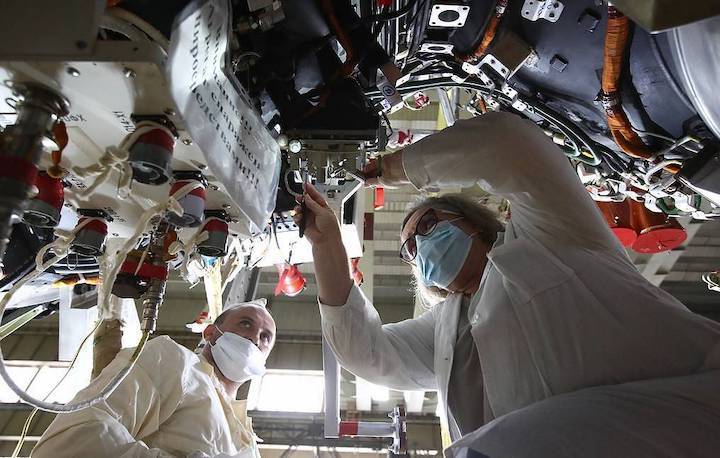14.04.2021
The Moon has now become a place for the space race (lunar race 2), President of the Russian Academy of Sciences Alexander Sergeyev said

Larger spending on space explorations will enable Russia to send three missions to the Moon and actively engage in the second lunar race, President of the Russian Academy of Sciences Alexander Sergeyev said at a session of the Academy’s Presidium on Tuesday.
On Cosmonautics Day on April 12, Russian President Vladimir Putin held a meeting with heads of the space industry and government members on the space research program. According to Sergeyev, it was confirmed at the highest level during the meeting that the government would restore financing of scientific space exploration under the federal space program, which would amount to 15 billion rubles ($195 million) a year.
"This is a very important moment related to our concerns that our proposals are postponed ever further. But now a decision has been made to restore financing at the level of 15 billion rubles, which will enable us to implement three missions to the Moon: Luna-25 this year, Luna-26 in 2024 and Luna-27 in 2025," Sergeyev said.
The Moon has now become a place for the space race (lunar race 2), the academician pointed out. He recalled that the first lunar race dated back to the period of 1966 - 1976 when about 20 soft landings on the Moon’s surface had been made.
"The USSR actively participated in this and the first soft landing was made by the Soviet Union. And the last Luna-24 probe that brought back lunar soil was the last mission of that period for conquering the Moon," Sergeyev said.
Returning to Moon
Forty-five years on, a return to the Moon is a landmark event. The Moon has become very attractive: the first lunar race was the period of conquering the Earth’s natural satellite whereas now time has come for its development, the head of the Russian Academy of Sciences said.
"What has the second lunar race originated from? First of all, it has become clear that if we want to fly to far away planets, then a multitude of deep space technologies must be tested on the Moon. It is located close to us and a lot of things can be tested there," he said.
Also, the data of lunar soil studies and the surface’s remote sensing suggest that the lunar regolith abounds in natural resources: the reserves of titanium, silicon and rare earth elements larger than those on the Earth, he said.
"This list makes it clear why a question of the Moon’s commercial development arises," the academician explained.
The Moon also evokes interest because large ice accumulations have been discovered on the Earth’s natural satellite. Given the presence of energy, ice is a source of both hydrogen and oxygen, Sergeyev pointed out.
"And also the ice obviously brought by comets raises the issue of a more detailed study of life because in case that it reveals biological molecules of quite a high development level, the issue of the origin of life on the Earth will be reviewed, taking this circumstance into account," the head of the Russian Academy of Sciences said.
Quelle: TASS
